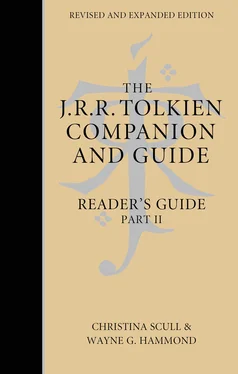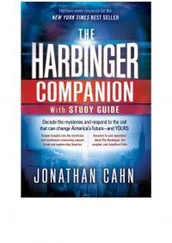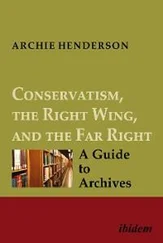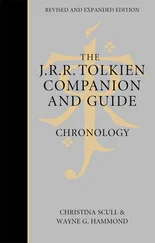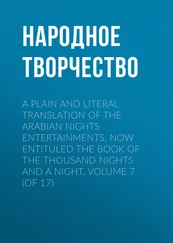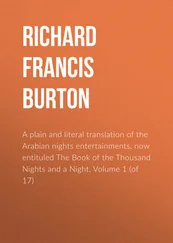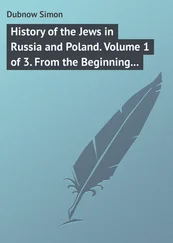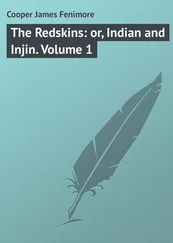Finally Tolkien turns to the question of the origin of Orcs: ‘Part of the Elf-Man idea gone wrong. Though as for Orcs, the Eldar believed Morgoth had actually “bred” them by capturing Men (and Elves) early [i.e. in the early days of their existence] and increasing to the utmost any corrupt tendencies they possessed’ (p. 406). (See also * Orcs .)
Christopher Tolkien comments that ‘despite its incomplete state … this is the most comprehensive account that my father wrote of how, in his later years, he had come to “interpret” the nature of Evil in his mythology …’ (p. 406). See also *Good and Evil.
‘Notes on Óre’. A single typescript sheet, apparently the beginning of a substantial essay on the common Eldarin root ȜOR and its descendants, edited with notes by Carl F. Hostetter, was published in Vinyar Tengwar 41 (July 2000), pp. 11–19.
In * The Lord of the Rings Appendix E Quenya óre is glossed ‘heart (inner mind)’, as used in a phrase such as ‘my heart tells me’, but ‘“heart” is not suitable, except in brevity, since óre does not correspond in sense to any of the English confused uses of “heart” ….’ The essay was to have discussed ‘what the óre was for Elvish thought and speech, and the nature of its counsels’ (p. 11) but does not proceed very far. The sheet was found between the typescript of the finished part of * The Shibboleth of Fëanor and the manuscript draft for an unwritten excursus on the names of the sons of Fëanor. It seems unconnected with that work, though probably contemporary with it, 1968 or later.
Pages of manuscript draft material give some indications of how the essay might have continued. Among these is an interesting note, more concerned with the * Athrabeth than etymology. The writer is not identified, but seems to be a Man of a later period. After summarizing the Athrabeth it continues: ‘For (as far as we can now judge [from]) the legends (mainly of Elvish origin probably, though coming down to us through Men) it would seem clear that Men were not intended to have Elvish longevity, limited only by the life of the Earth’, but were intended to enjoy a much greater life-span before passing from the circles of the world. The Elves believed that the life-span of Men had been shortened as a result of some rebellion against Eru in the form of accepting Melkor as God, after which ‘only the wisest of Men could distinguish between [?his] evil promptings and true óre ’ (p. 14).
On Eldarin and Quenya, see *Languages, Invented.
The Notion Club Papers. Story, published with commentary and notes in * Sauron Defeated (1992), pp. 145–327.
SYNOPSIS
The heart of The Notion Club Papers is presented as the surviving part of a record of meetings of an *Oxford society during 1986 and 1987 (some forty years in the future when Tolkien wrote the work). Following some preliminaries, the first of its two parts (as originally conceived) begins with a brief report of a meeting in November 1986, notes the omission of ‘one or two minor entries’, and continues with an account of the meeting of 20 February 1987. Michael Ramer, one of the members of the club, has finished reading a space-travel story he has written. This leads to discussion of the credibility of the machine or other device used by writers of space stories to take characters to their destination. Another member, Rupert Dolbear, says that the problem with Ramer’s work is that it is out of keeping with its frame-machinery, and challenges Ramer to say how he got to the place described in the story.
At the next meeting, Ramer explains that he has considered methods of space-travel both for a story and for himself, and that he has tried to train his mind to travel in his dreams. He describes various dream experiences, some inspired by stories he had written long ago, some fragmentary, such as a Green Wave towering over fields, and visions of the planets of our solar system as well as unknown worlds. When he mentions the names of his worlds, the members discuss language and the weak methods of communication common in space-travel stories. Ramer says he has more dreams about *Atlantis than about space, and mentions the Wave towering over the land, a Great Door, and the Elvish En-keladim (all aspects of Tolkien’s mythology, in which *Númenor is associated with Atlantis and his own dreams of a great wave). Ramer ends his account by describing a vision of a disorderly planet, then of an area in which the inhabitants and their buildings spread like ringworm; but as he came closer, he realized that he had been watching a speeded-up history of the Thames Valley and Oxford.
The second part of the work records a series of meetings following directly on the first part, in which the matter of Númenor becomes of prime importance. It seems likely that Tolkien originally intended Part Two to proceed differently, since an outline for it begins: ‘Do the Atlantis story and abandon Eriol-Saga, with Loudham, Jeremy, Guildford and Ramer taking part’ ( Sauron Defeated , p. 281). But there is no indication of how the ‘Eriol-Saga’ was to be introduced. Since Arundel Loudham (changed to Lowdham during the writing of the first version of Part Two) was to play an important role in the ‘Atlantis story’, Tolkien made additions to Part One to suggest Lowdham’s interest in the myth. A link is provided by a fragmentary entry reporting the end of a meeting on 13 March, when Lowdham tells Ramer and Guildford that he has been having strange experiences. As the story proceeds, it becomes clear that he is haunted subconsciously by Númenor, and is reminded of the temple Sauron built there when he sees what appears to be smoke coming from the lantern of the Radcliffe Camera.
At the first meeting of the Club in Trinity Term 1987, on 8 May, the members discuss neologisms (the use of new words or expressions), the misuse of established words, and the way that language changes and evolves. They also talk about legends of origin and cultural myths, and whether, if one could go back in time, one would find that myth dissolves into history, or real history becomes more mythical. At some point Lowdham becomes upset, curses ‘Zigûr’, and cries out: ‘Behold the Eagles of the Lords of the West! They are coming over Nūmenōr!’ Ramer says that Nūmenōr is his name for Atlantis, and fellow member Wilfrid Trewin Jeremy says that he also has some recollection of hearing the name. At the meeting on 22 May Lowdham comments on his strange names Alwin Arundel , chosen when his mother objected to the Ælfwine Éarendel his father, Edwin, had wanted to give him. He tells how his father set out in his ship The Éarendel (in the first text Éarendel Star ) one day in 1947 and was never seen again. Lowdham remembers his father keeping a diary in a strange script, and that after his disappearance Lowdham had found a sheet in the same script but could not decipher it. The members discuss the meanings of the names Ælfwine and Éadwine , and historical figures with those and related names. (See also *Eriol and Ælfwine.)
This in turn leads to a discussion of the name Éarendel in the lines from the Old English Crist : Éalá Éarendel engla beorhtost / ofer middangeard monnum sended . Lowdham says that he has heard the similar ëarendil in another language, ‘where it actually means Great Mariner, or literally Friend of the Sea; though it also has, I think, some connexion with the stars’ (p. 237). When he is asked ‘what language?’ he tells the members that since he was about ten he has had ‘words, even occasional phrases’, ringing in his ears; ‘both in dream and waking abstraction. They come into my mind unbidden, or I wake to hear myself repeating them. Sometimes they seem to be quite isolated, just words or names …. It was a long time before I began to piece the fragments together’ (pp. 237–8). He recorded these, and after removing Anglo-Saxon or related elements, most of the remainder seem to belong to two languages which he had never come across. He associates both languages with a place called Nūmenōr in the first language (which he calls Avallonian , in fact Quenya; see *Languages, Invented), and Anadūnē in the second (which he calls Adunaic ).
Читать дальше
